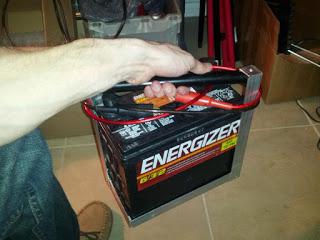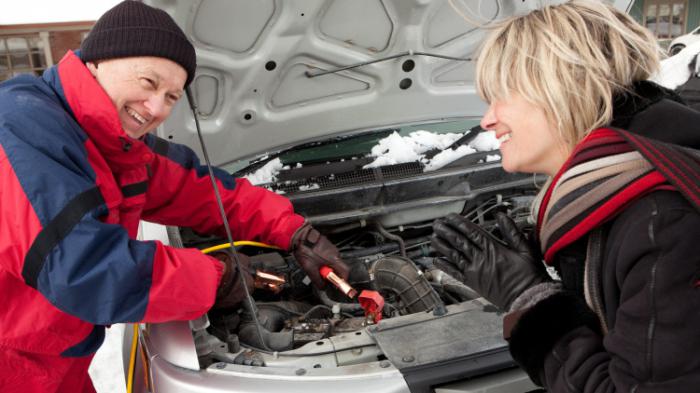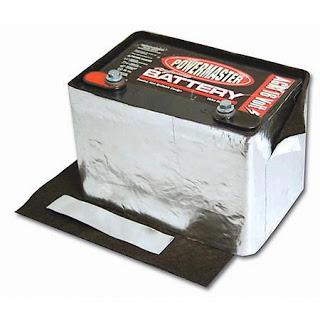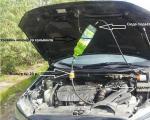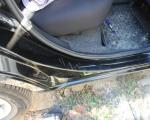Frozen battery, what to do? How to insulate the battery for the winter
When severe frosts come, there is a risk of freezing the battery. "Why is this happening?" - you ask. Usually due to low battery. It turns out that blaming the battery for refusing to work is stupid, because you yourself are almost always to blame. Quite often there is a question: the battery is frozen, what should I do? Let's try to understand this in detail.
General information
Many motorists ask themselves, at what temperature does the electrolyte freeze? It is rather difficult to answer this question, however, if its density is in the range of 1.27-1.29 kg / m 3, then even the most severe frosts will not take this electrolyte. Of course, this issue is especially relevant for those vehicles that are on the street. If it is garage storage, then the risk of freezing is greatly reduced. In general, modern batteries are designed to operate in the temperature range from -45 to +65. If the frost is even greater, then the density of the electrolyte is increased by adding a certain amount of acid. It is worth noting that if the battery is discharged, then carbon dioxide and water are formed. The last element just contributes to a more intense freezing of the battery. In any case, if the battery is frozen, what to do is of interest to everyone. Let's try to deal with this issue.
Frozen battery: what to do?
If the battery is frozen, then you do not need to throw it away, because in most cases it can be restored. The main thing is to do everything right. First, you need to conduct a visual inspection. The fact is that frozen water, or more simply, ice, can damage thin plastic walls, thereby causing cracks. In this case, the battery is no longer usable. Secondly, take the battery to a warm room and leave it there for a while. It is necessary that the temperature of the electrolyte rises slightly, in priority - to room temperature. Do not forget that in no case should you charge the battery if there is ice in it. This can lead to a short circuit, and then further operation will be impossible. 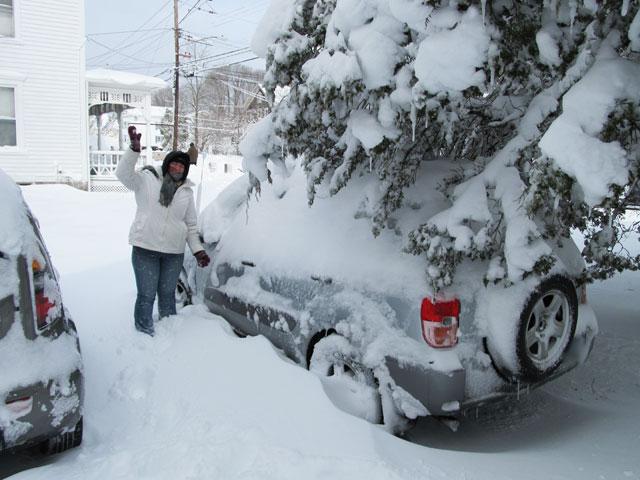
What to do next?
After the battery warms up a little, you need to inspect the case again. Melted ice can make itself felt. Please note that if the walls were swollen, then they should take their normal state. The liquid found on the body must be checked with litmus. If the paper turns red, then we are dealing with an acid that is part of the electrolyte. Do not ignore small cracks or holes. A charged battery will flow confidently, and this is not good. Take a sample of the electrolyte, if it has a "healthy" appearance, that is, it is a clear liquid - everything is in order. However, it can also be cloudy. This indicates that the battery will soon end. In any case, it is better to do a transfusion. The starting current and capacity will decrease somewhat, but the battery will last a little longer.
A little about proper charging
It must be understood that recharging the battery must be carried out using an automatic charger. The fact is that this is the only way to achieve a full charge. There are several interesting features here. For example, at the first stage, a pulsed high current is applied, which will break through the sulfation of the plates. Next comes the main stage, which uses a constant low current. And already at the final stage, the battery is brought to its maximum maximum at a reduced current. In any case, the main task is to fully charge the battery, but overcharging is not allowed. Again, to ensure that all rules are met, it is recommended to use an automatic charger. In principle, we figured out the question of why the battery freezes and how to restore it after that. Well, now let's look at something else.
How to prevent freezing?
There are several ways to deal with freezing batteries. In principle, the most effective and simplest is to bring the battery into a warm room overnight. Moreover, if you use the vehicle irregularly, and the car is parked on the street or in an unheated garage, then this is a must. In winter, you need to charge the battery more often. For example, if the battery has 70% of its nominal charge, then it can be recharged. Accordingly, the risk of freezing will be reduced to a minimum. In addition, in winter, the load on the battery increases significantly due to the use of the stove, difficult starting of the engine, headlights on, etc. A lot depends on the generator, so periodically check what level of charge it gives out. Each driver has one simple task - to keep the density of the electrolyte in the normal range, that is, 1.27-1.29 kg / m 3. In principle, a car battery should be inspected several times more often in winter than at other times of the year. 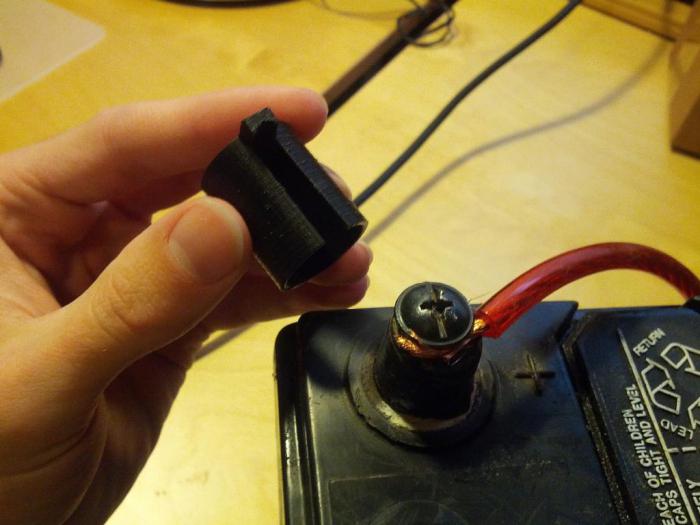
How to insulate the battery for the winter
There are several popular ways to insulate a battery. One of them is well suited if you often use the vehicle in winter, the second - if rarely. Today there are special insulated compartments in which the battery is placed. It turns out that between the compartment and the battery there is a small layer of felt or foam. The rate of decrease in the temperature of the electrolyte in this case is reduced to a minimum. Approximately 12 hours of downtime in a frost of 50 degrees, the battery will retain its previous performance. For example, a container with a foam layer of 20 millimeters improves thermal insulation performance by 200% compared to an uninsulated battery. It should be understood that the larger the thermal insulation layer, the better the effect achieved. But sometimes it is impossible to install the container or it is not enough, in this case, additional heating of the battery will be required.
The easiest way to insulate
Most drivers have never heard of special containers with thermal insulation material and somehow got out of the situation. There is a fairly simple solution - wrap the battery in rags. Of course, this can help with a slight sub-zero temperature, but not at -40. If you urgently need to get out of a difficult situation, then as an option, ask a neighbor or friend for a battery. A few hours will be enough for you, at least the vehicle will not stand without an alarm. In extreme cases, you can almost always lock the car with a key, and take the battery home. If the vehicle is in a garage that is not heated, then this is not a problem at all. Do not forget that the more the battery is in a discharged state, the less its capacity becomes. This is due to the sulfation process. In simple terms, the electrolyte partly becomes water, and the plates will no longer hold a charge, as before. In principle, you already know how to insulate the battery for the winter, so you should not have any problems.
You already know that if the electrolyte is frozen in the battery, then this is not a sentence at all. Warm it up, check the integrity and test. If there is no desire to do such things, then go to the experts. They will check the battery and tell you if it's safe to use or if it's time to send it in for recycling.
Many are still wondering: can the battery freeze in a charged state? An unambiguous answer cannot be given. If it is properly insulated, then theoretically - no, although in practice it is quite possible. However, with a normal electrolyte density, it is less susceptible to sub-zero temperatures. From this, we can draw a completely logical conclusion that the car battery should be serviced more often in winter. Also, be aware of contact with acid. If it gets on your hands, then it must be washed off with running water.
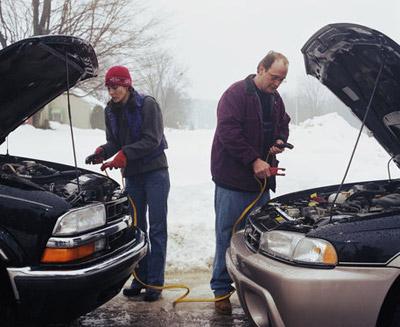
Conclusion
Today, many companies produce a battery for the winter. In principle, this is an ordinary battery with the only difference being that it can operate under more severe conditions, say not at -40, but at -50. In any case, the older your battery is, the less capacity it has, so using such batteries in winter is not the best solution. This is especially true in cases where short distances are expected to be driven with frequent engine starts. This leads to a significant discharge of the battery, since the starter does not have time to restore the charge. In principle, this is all on this topic. If the battery is frozen, you already know what to do. Under any circumstances, it makes sense to try to reanimate a battery before sending it to a landfill. Also, you can always buy a helium battery, which is not afraid to be in a discharged state, but survives the cold worse.

